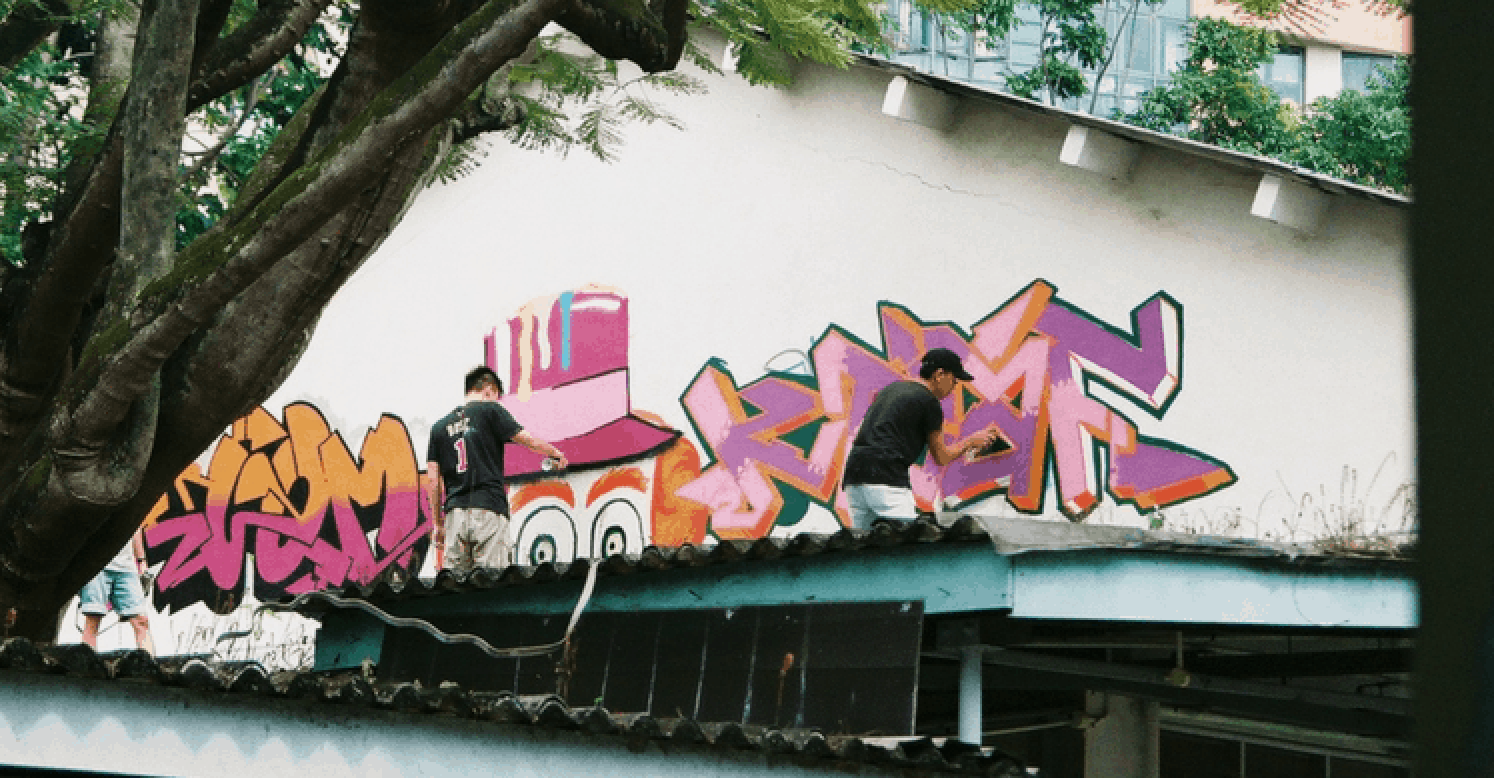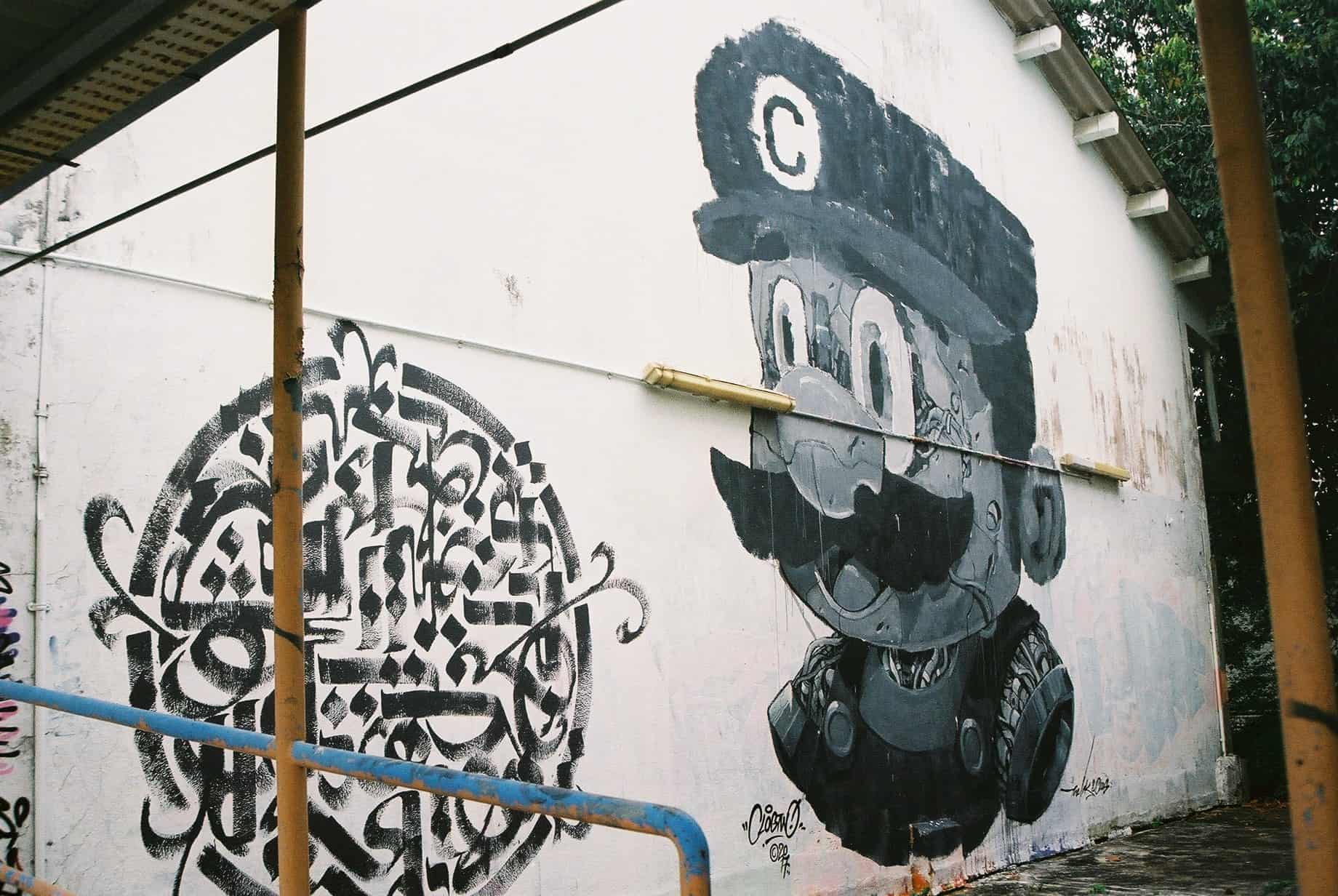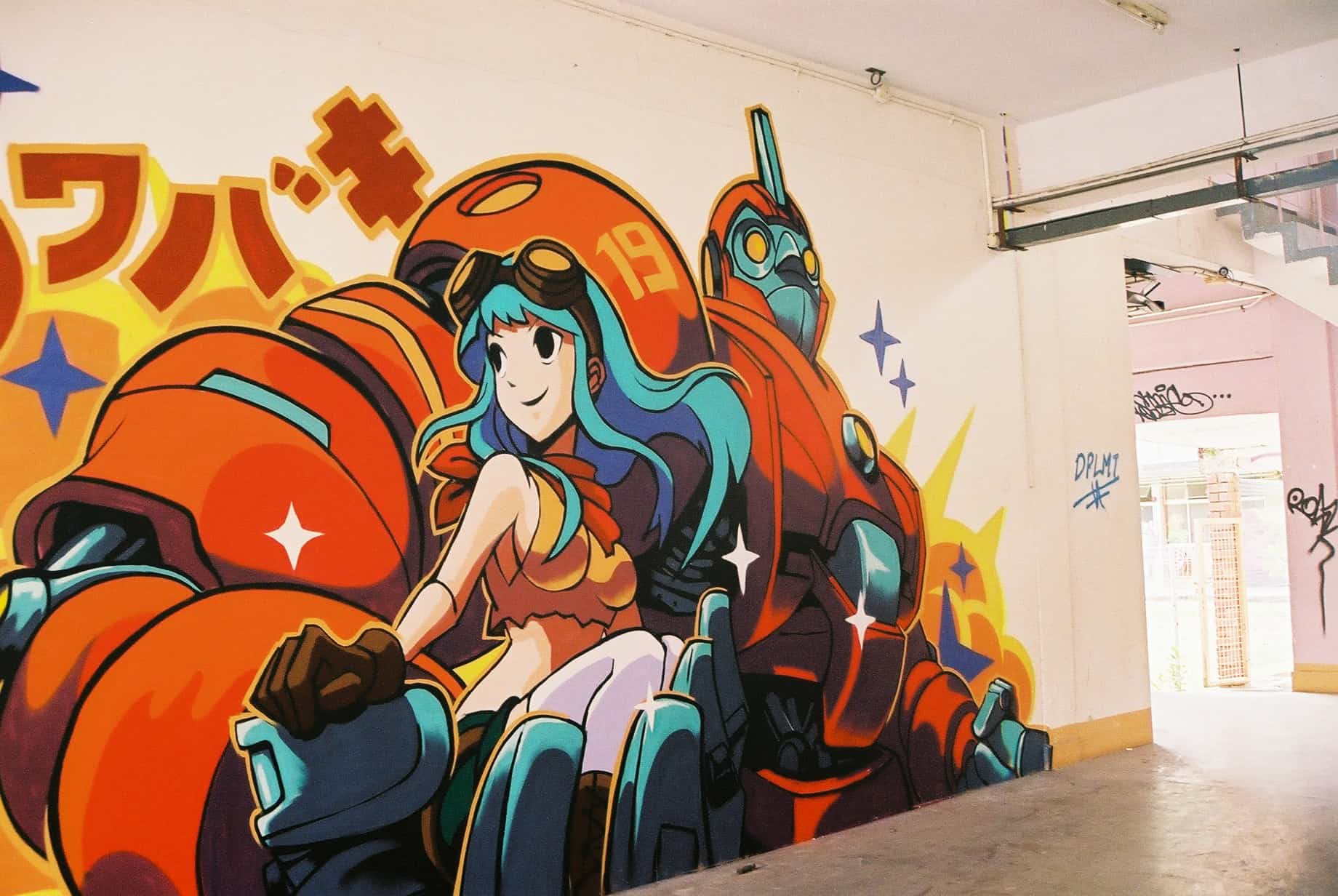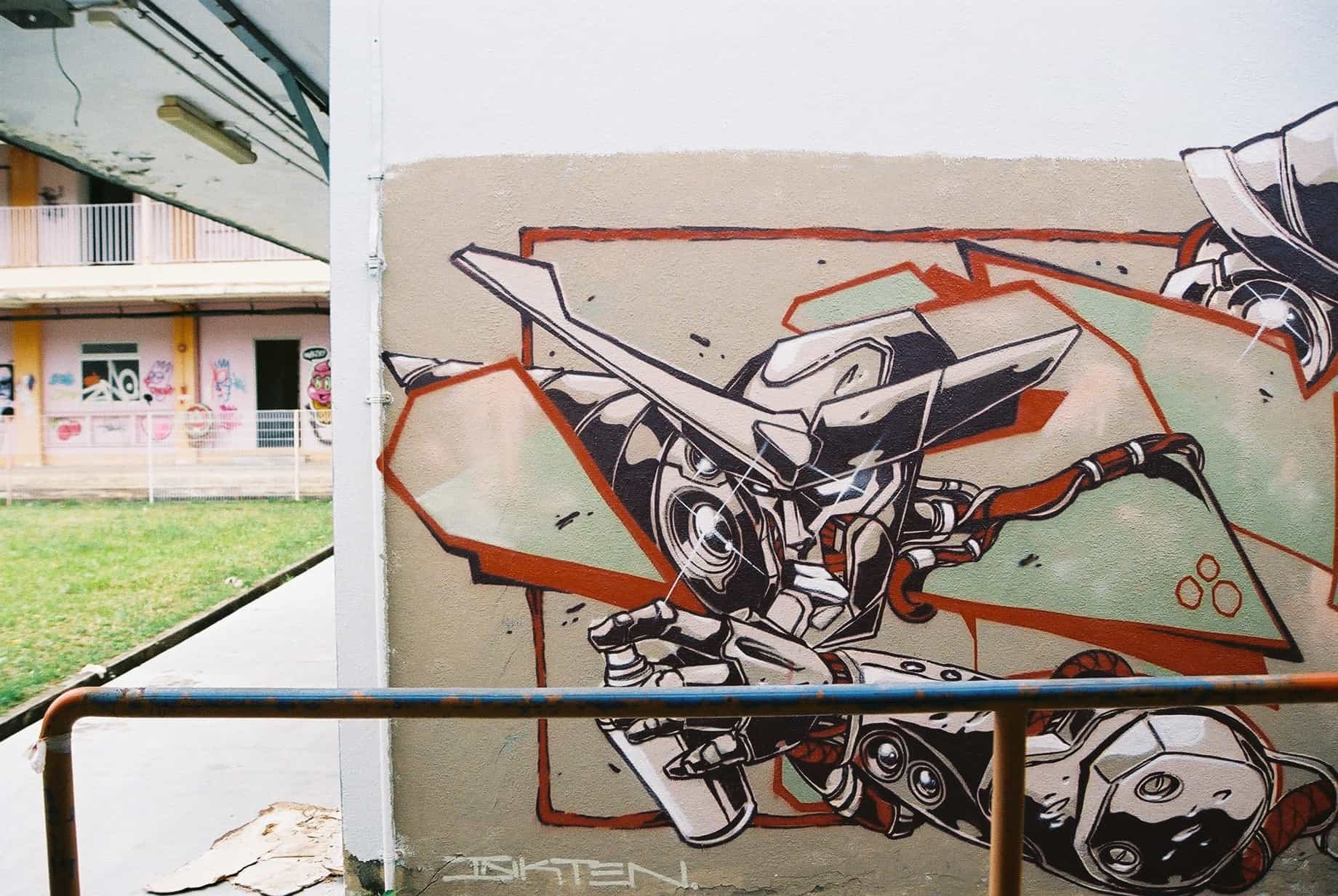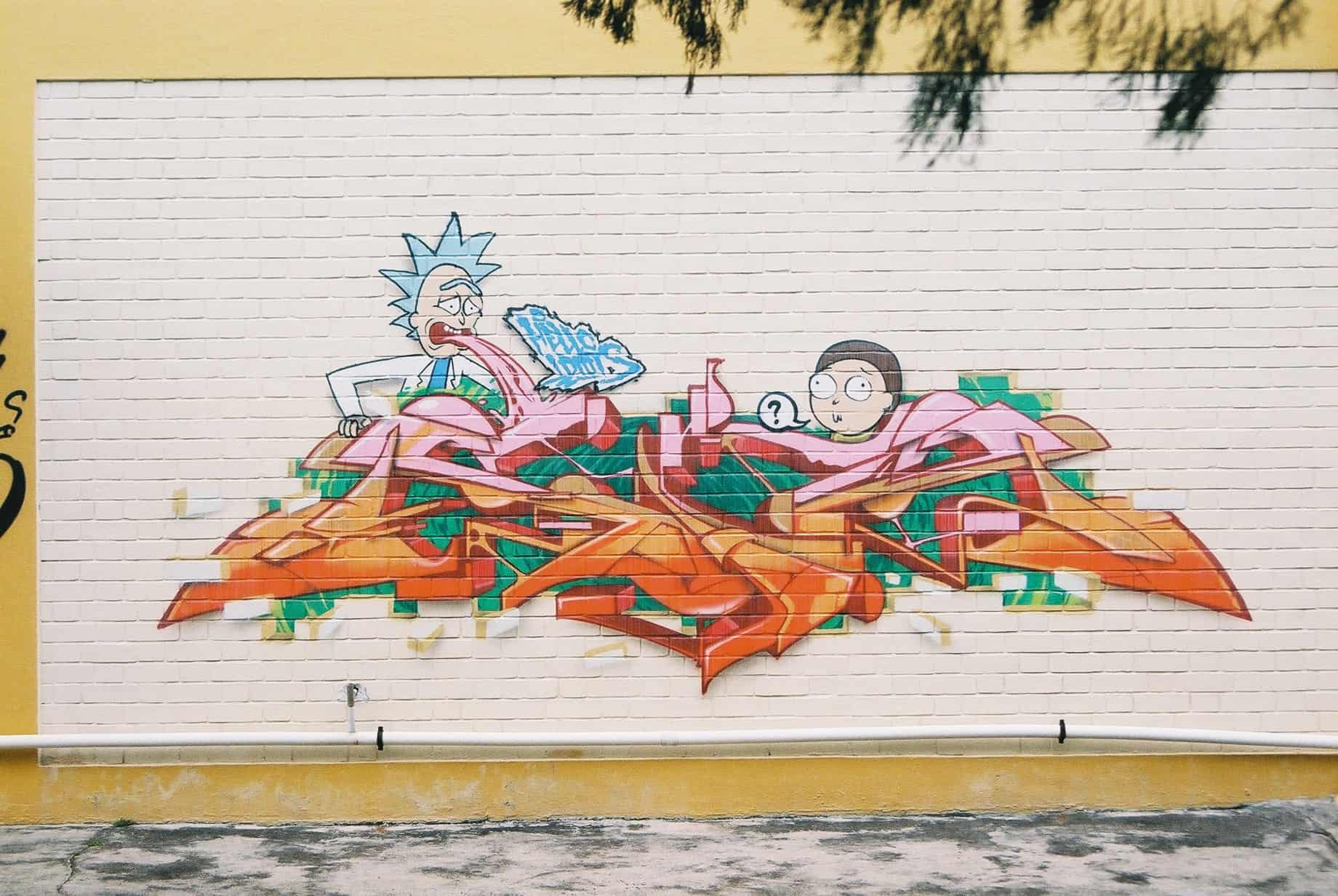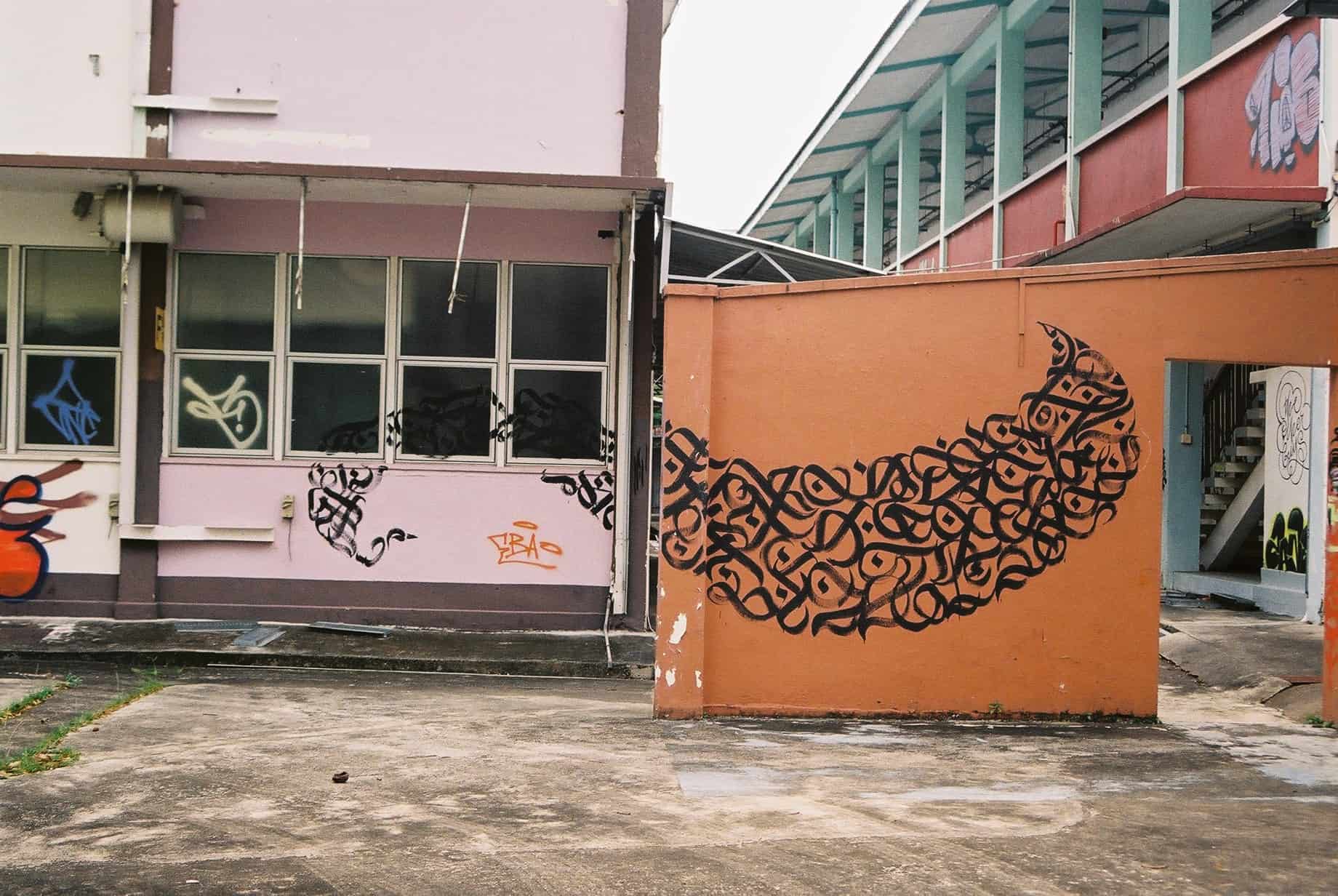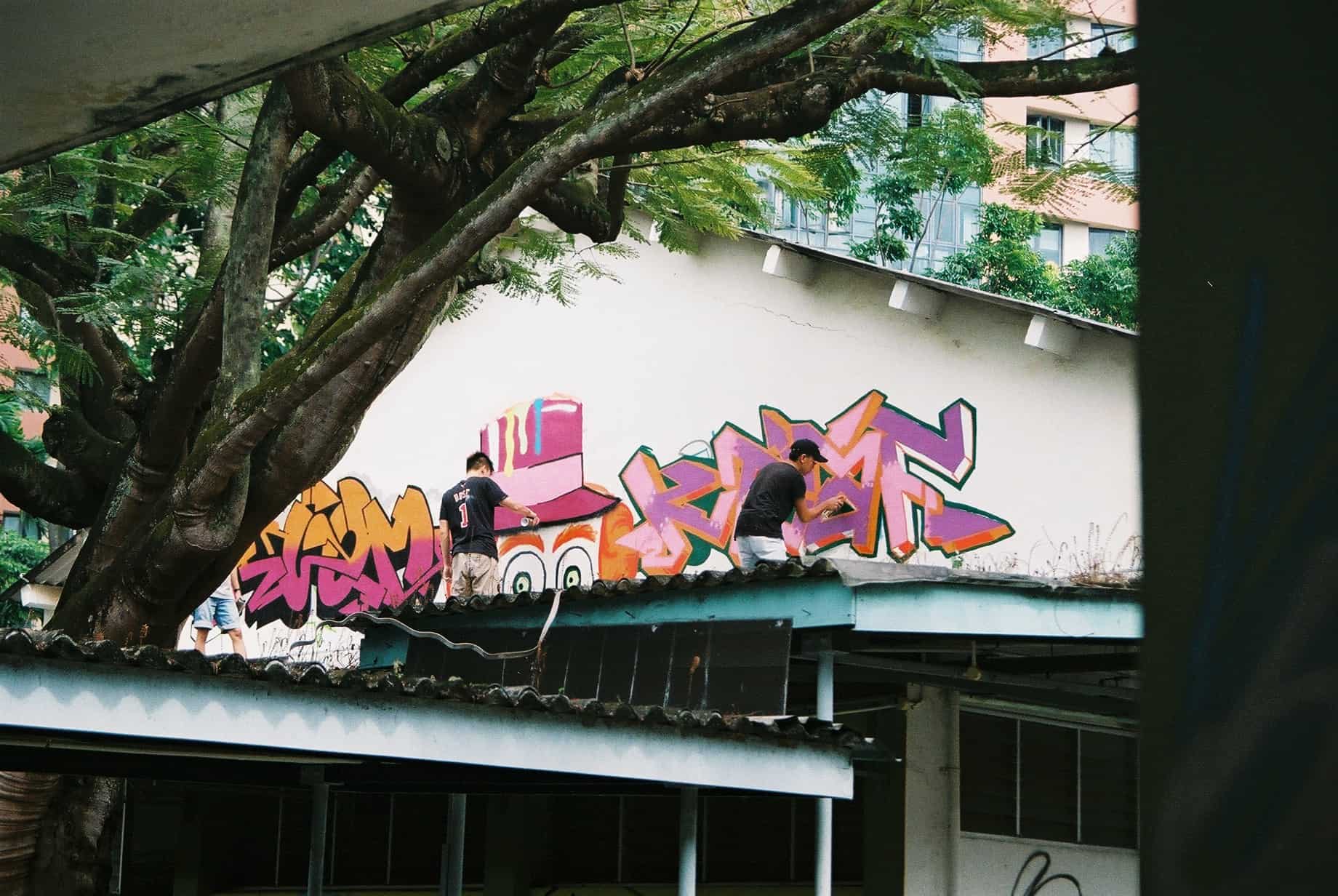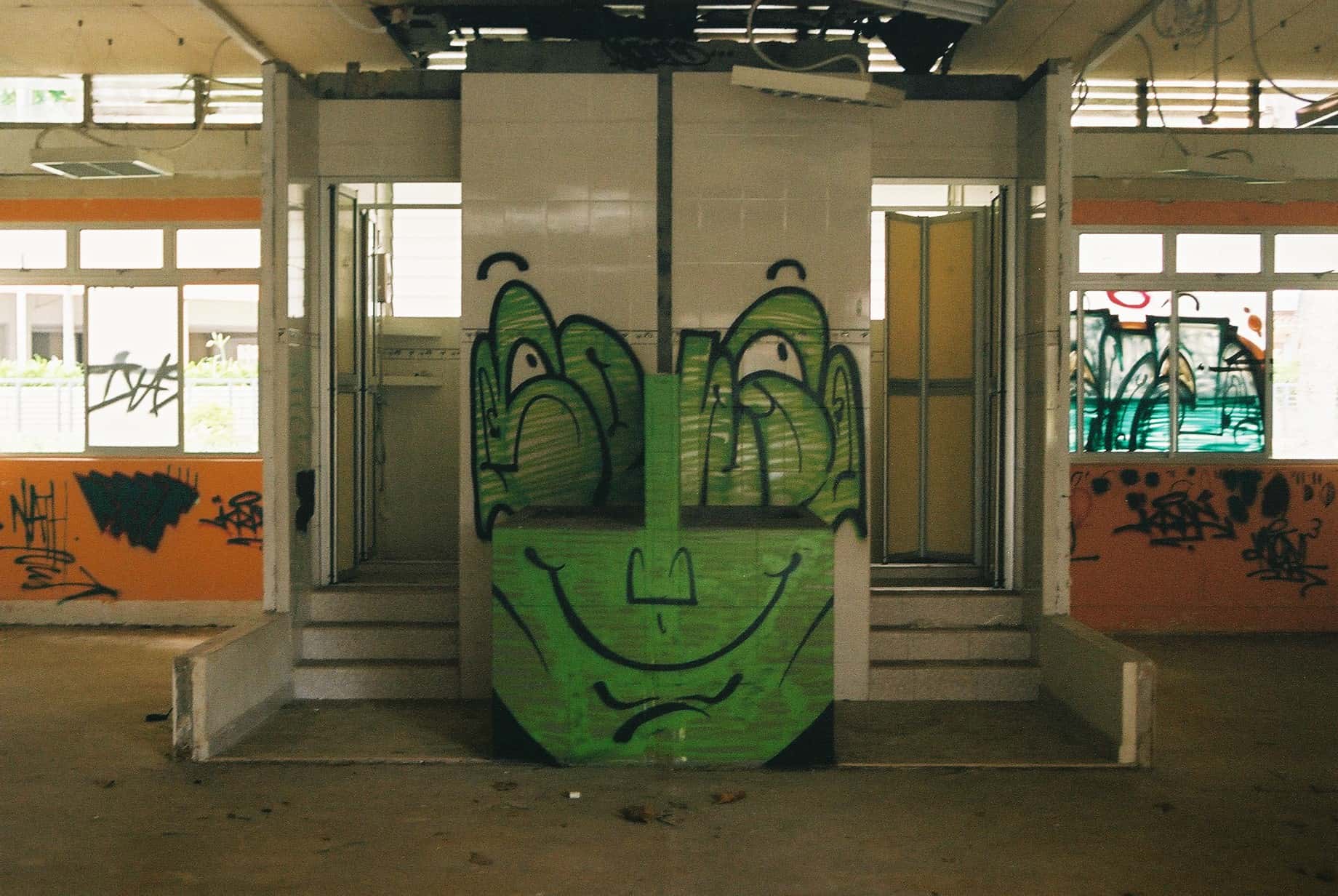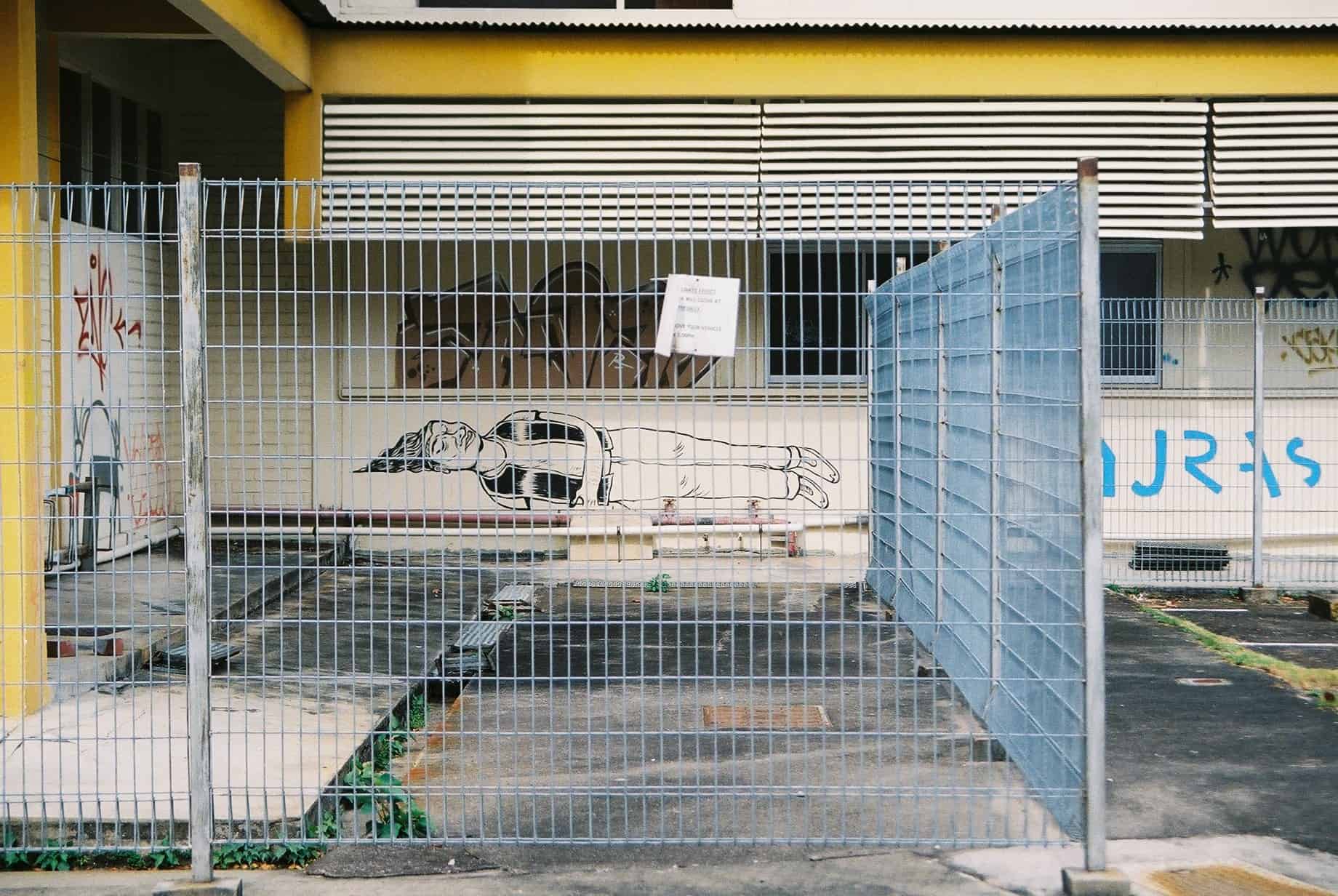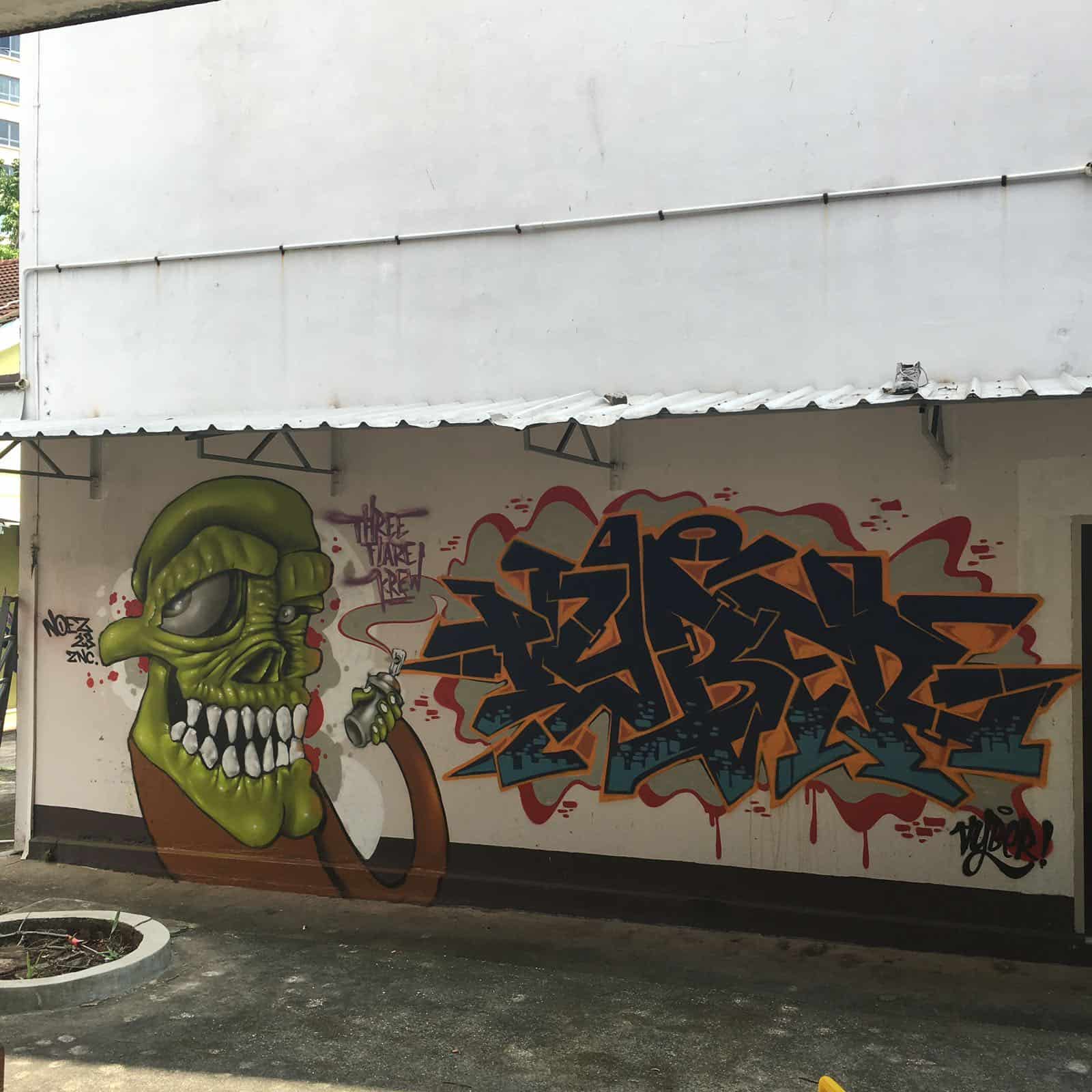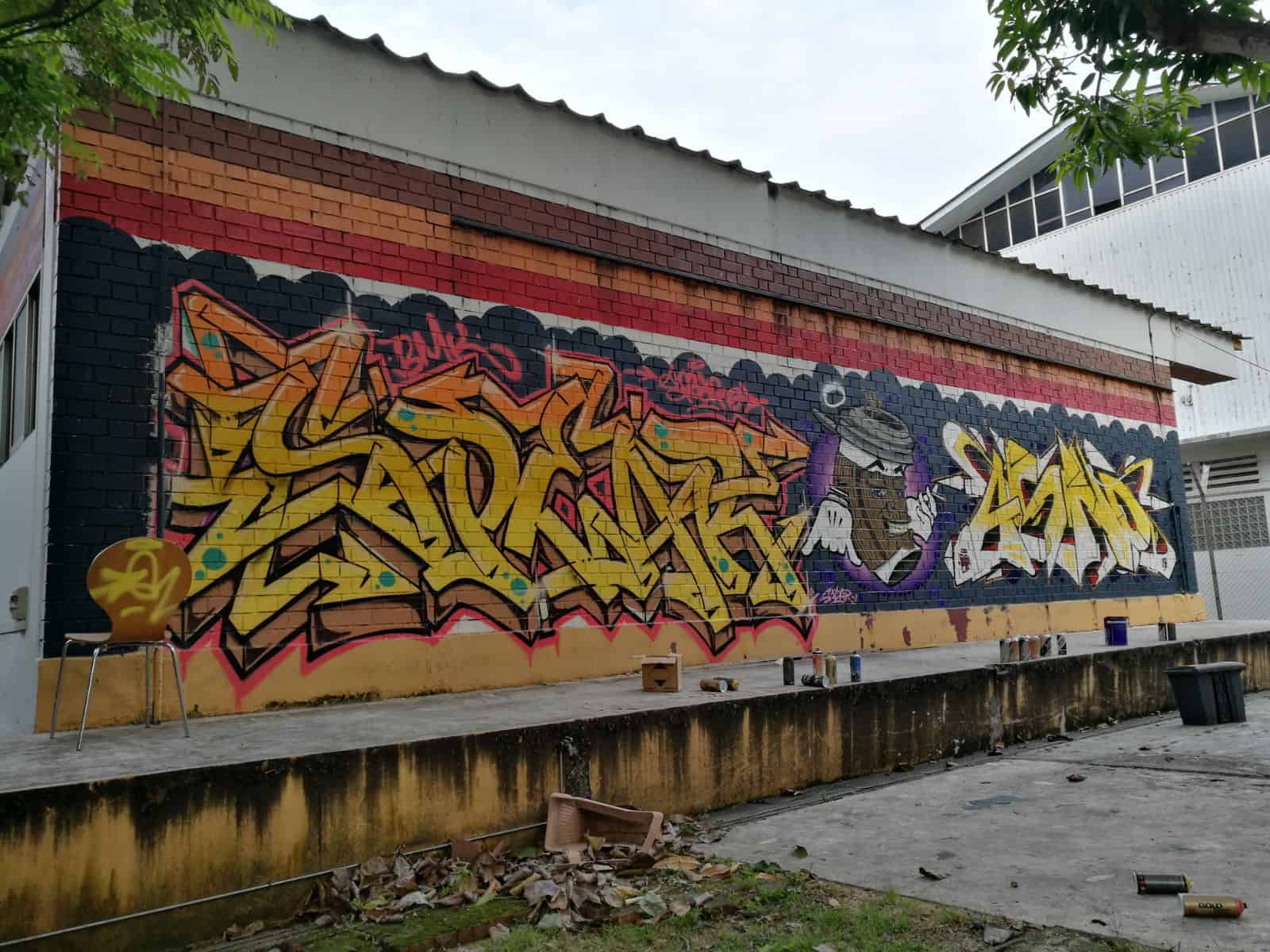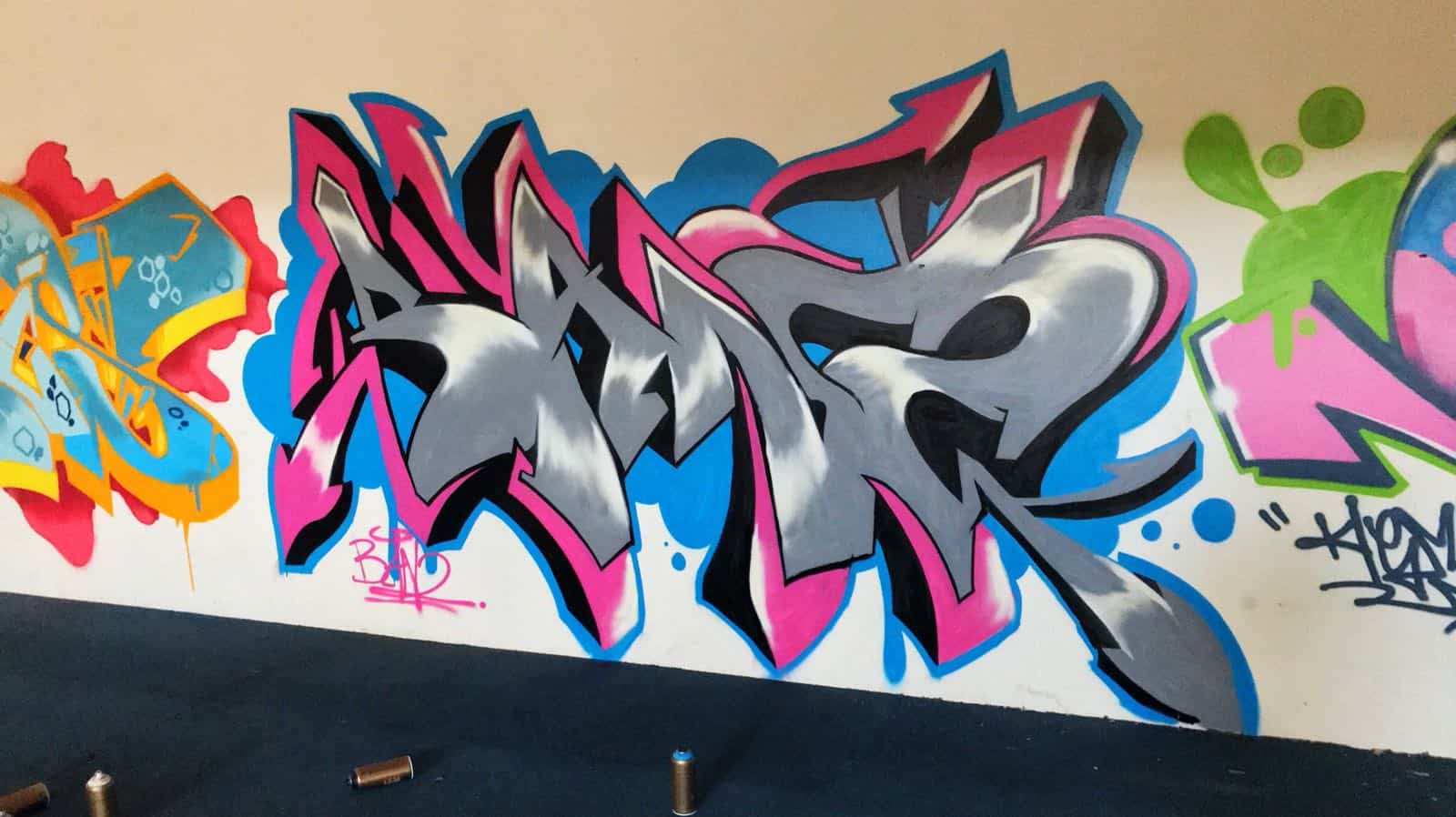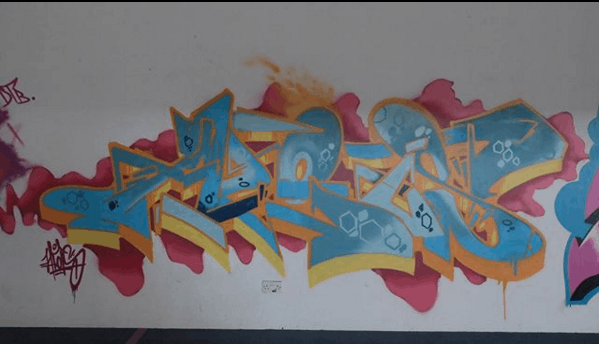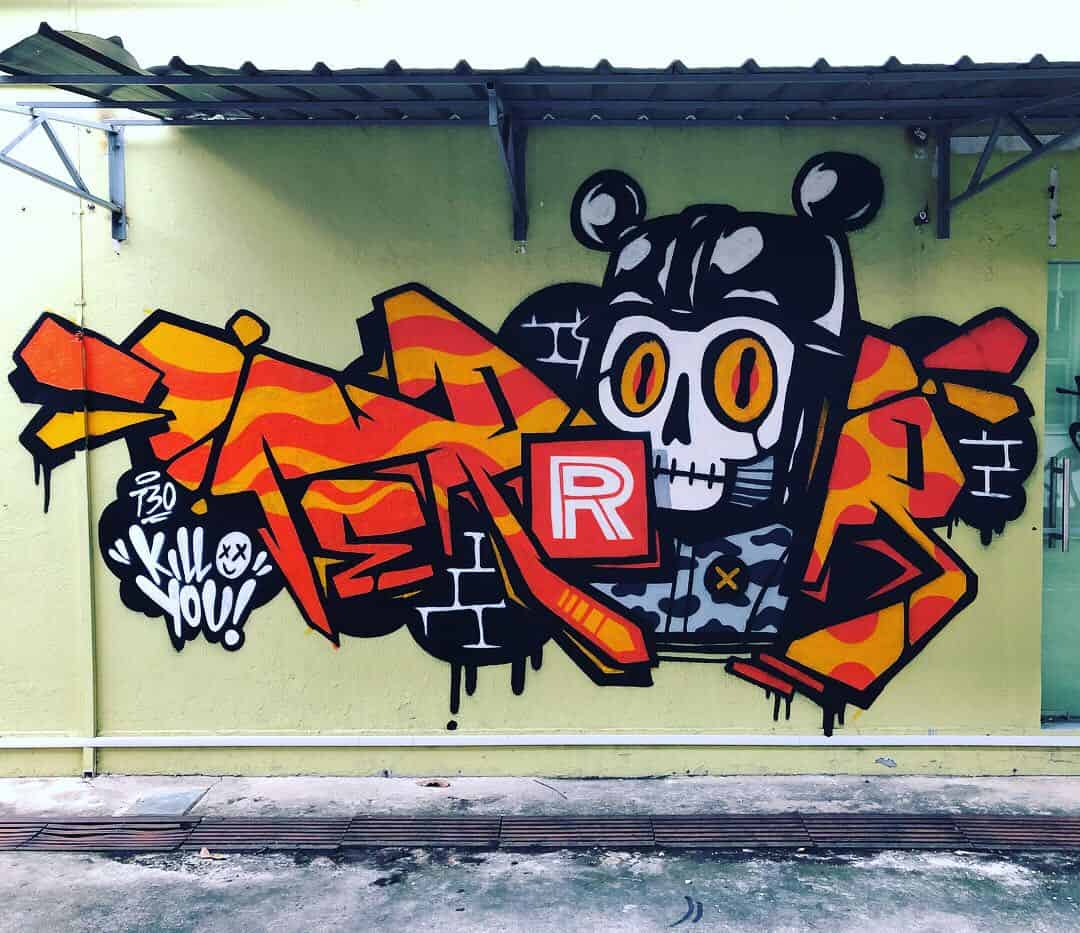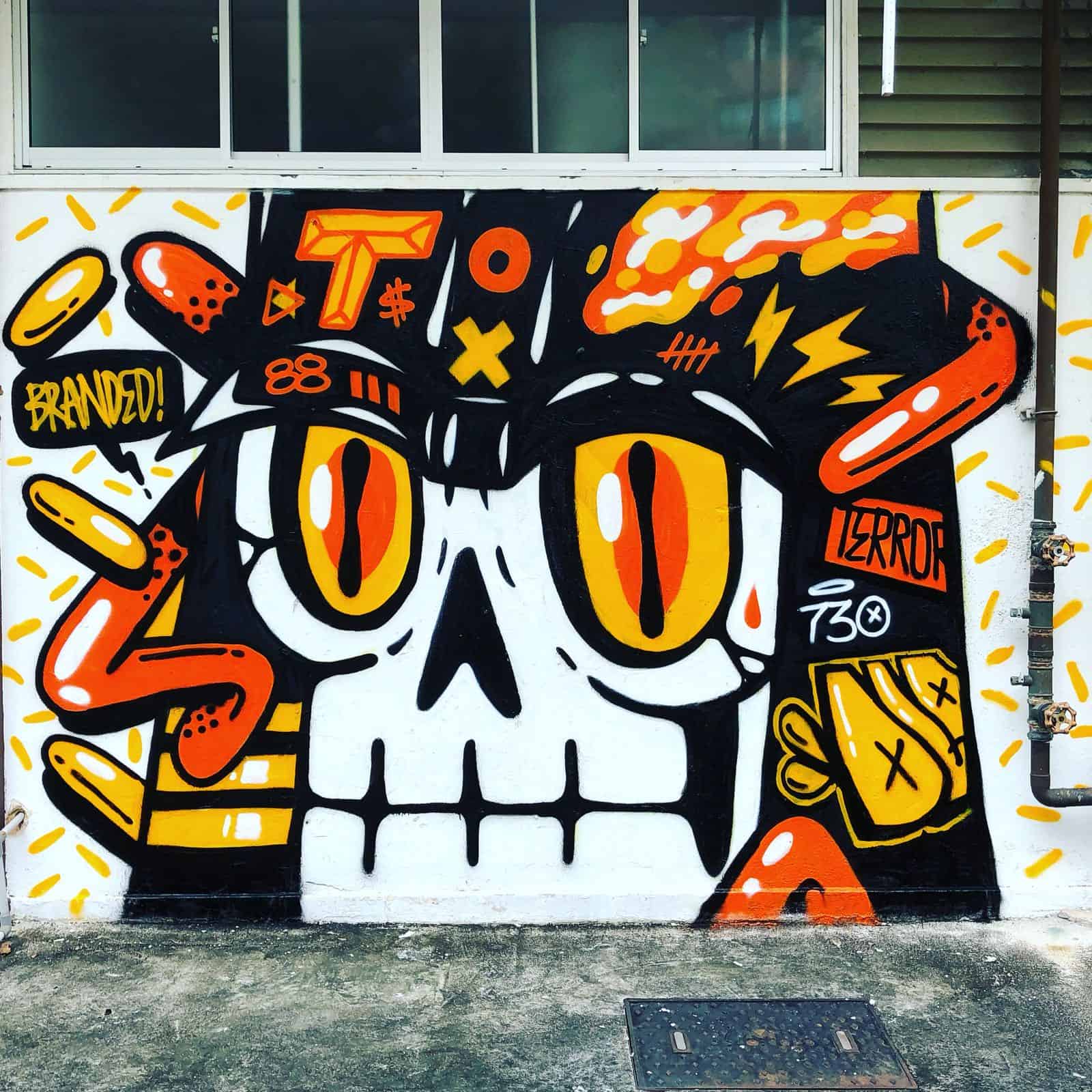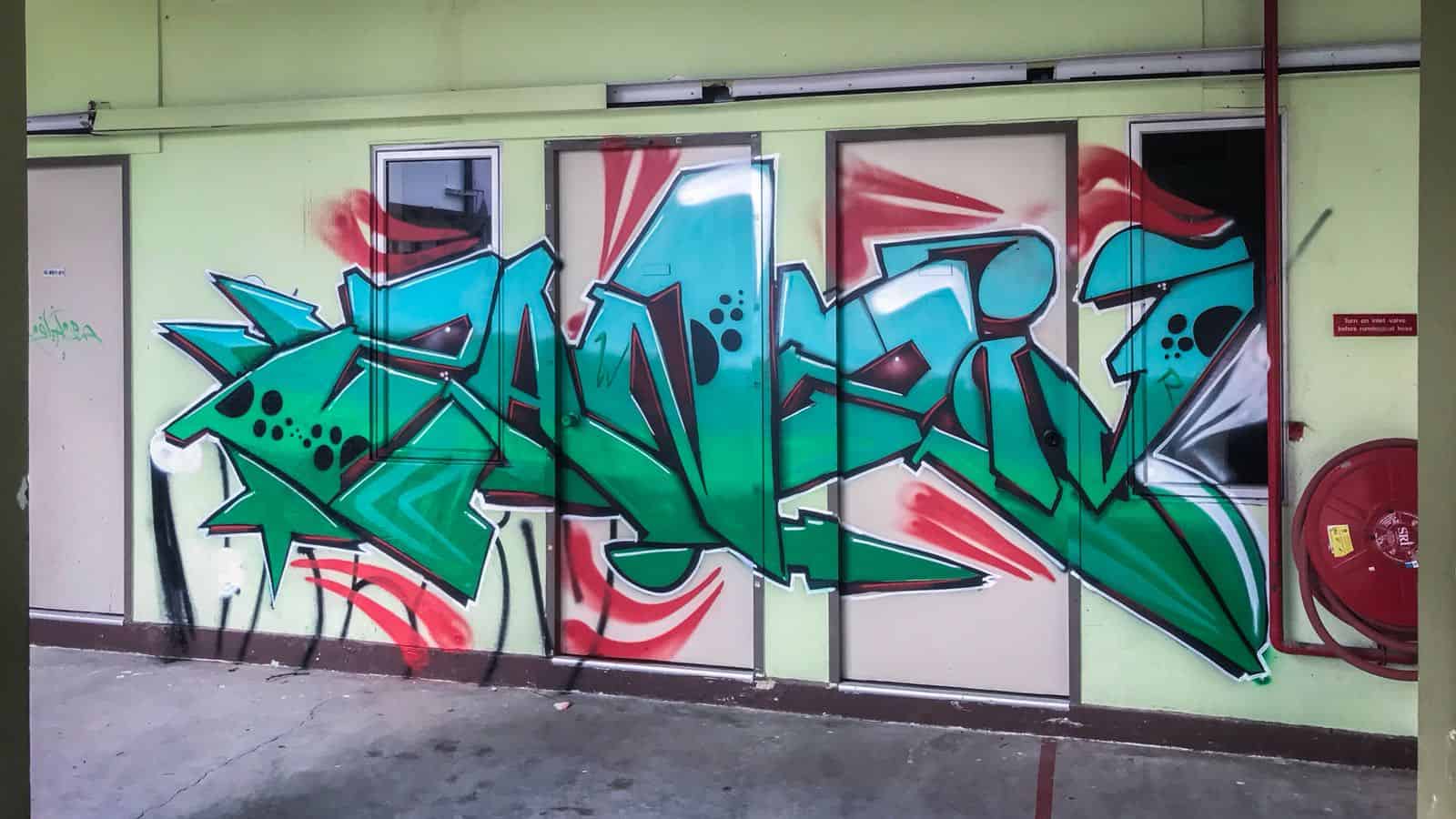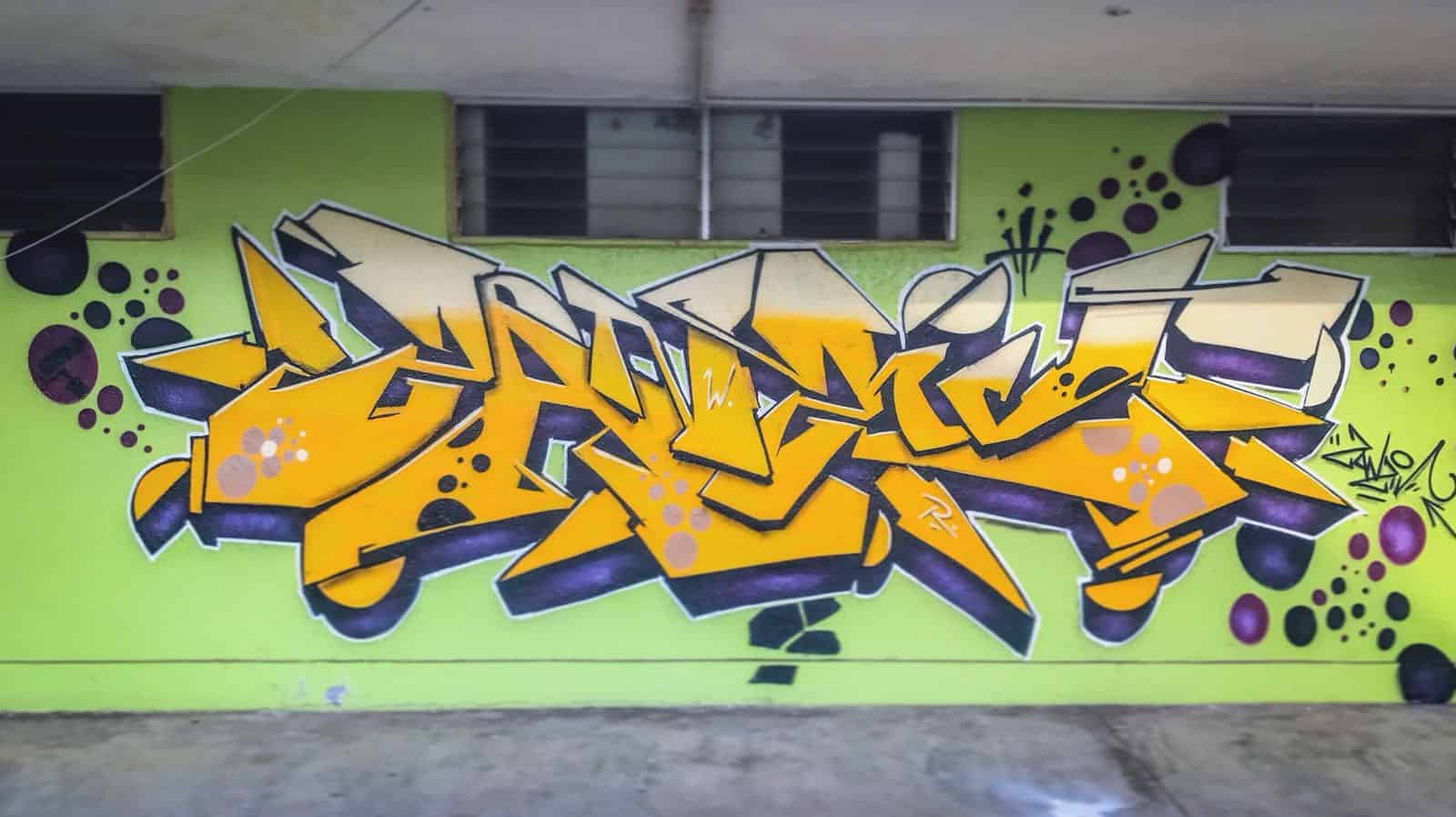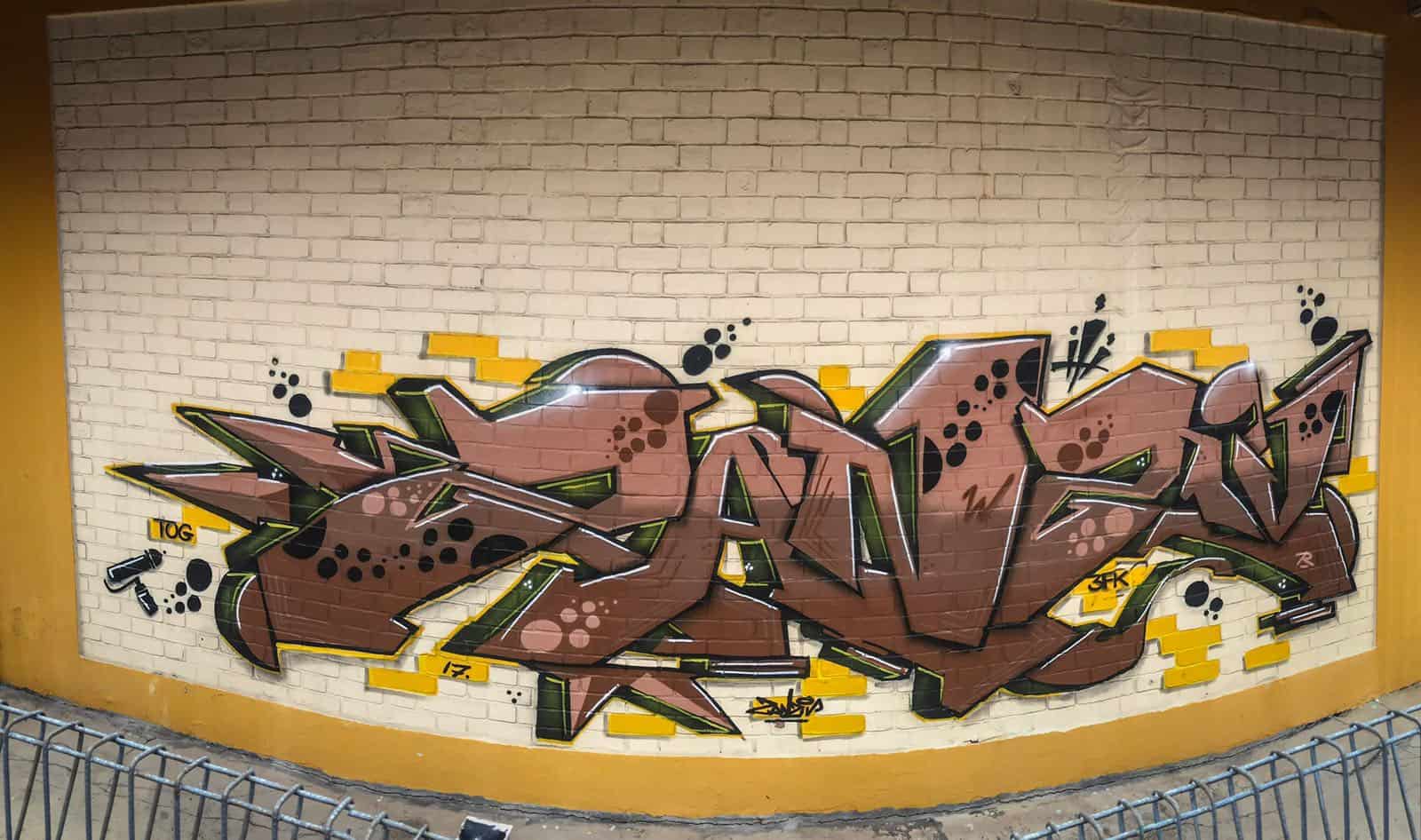Huddled in the heart of Tanjong Katong is a series of old, abandoned buildings. At first glance, they look hauntingly dead and deserted, but the random colourful and striking graffiti on its façade suggests otherwise.
This is 369 Tanjong Katong Road – a site which was most recently used as a hostel for international students and also once housed the famous Peranakan Food Village.
Its roots trace back all the way to 1956, where it was first built to accommodate the Tanjong Katong Technical School.
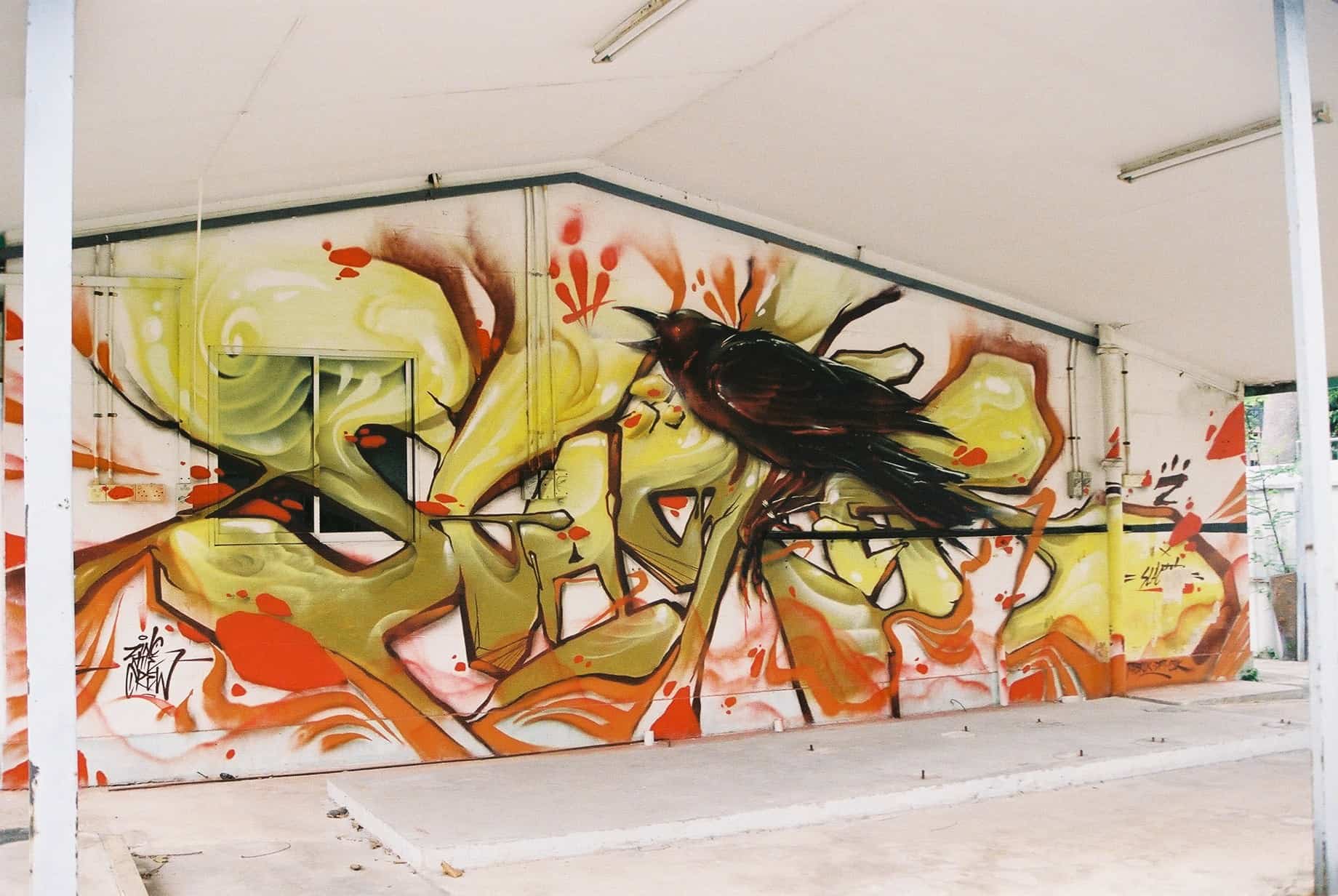
Today, these buildings stand in stark contrast to its surroundings due to the fact that it’s tattooed from top to bottom in bold and beautiful works of art.
Uncommon Sights
Looking at it from the main road, it is hard to not notice the spray-painted works that adorn it – a scramble of ornately-designed patterns painted upon crumbling cement walls, dusty bricks and rusty zinc.
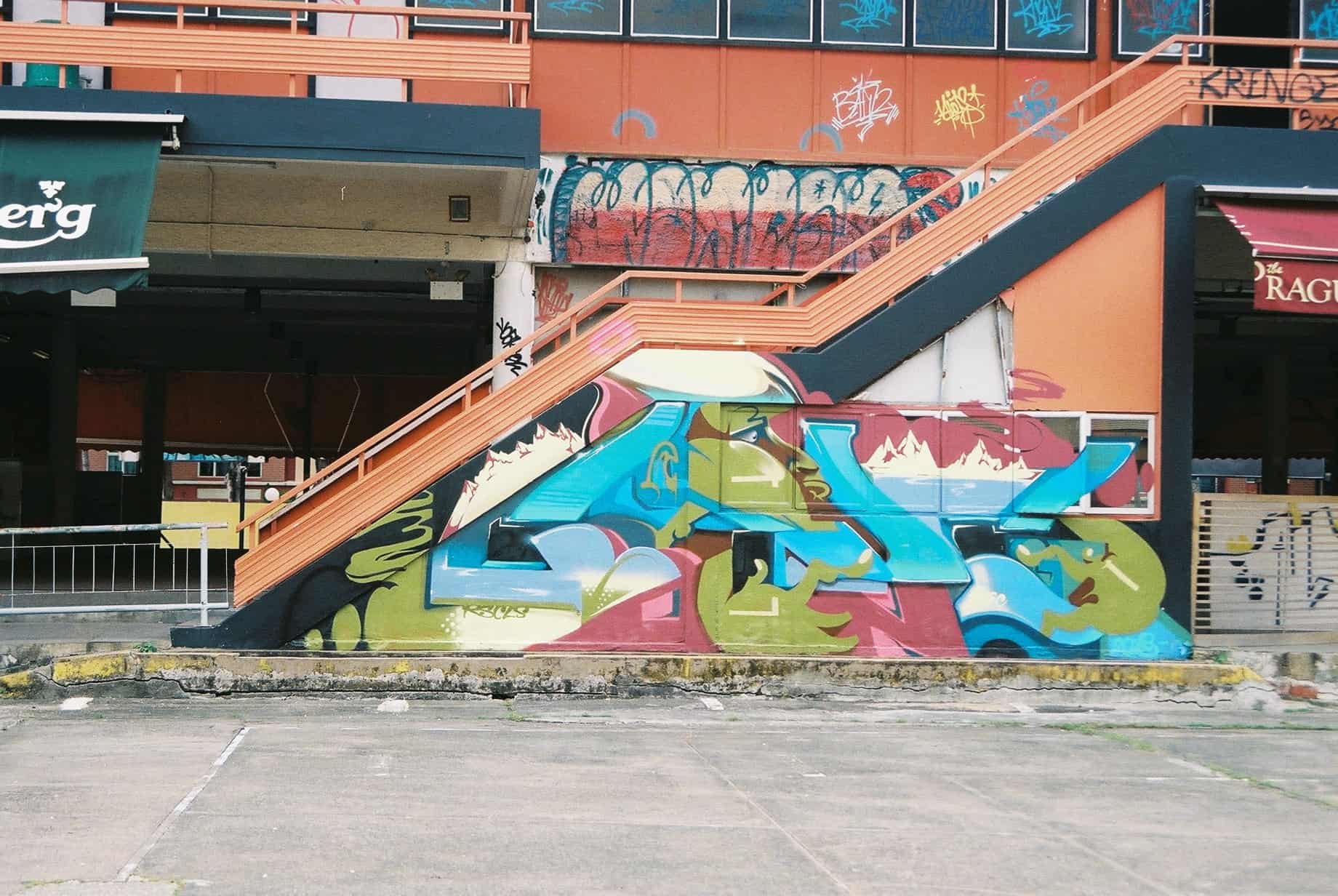
In sparkly Singapore, such sights are uncommon.
Graffiti is pretty much non-existent in the streets, but a quick glance at the art present in this complex is proof that there exists a strong and thriving community of graffiti and street art enthusiasts in Singapore.
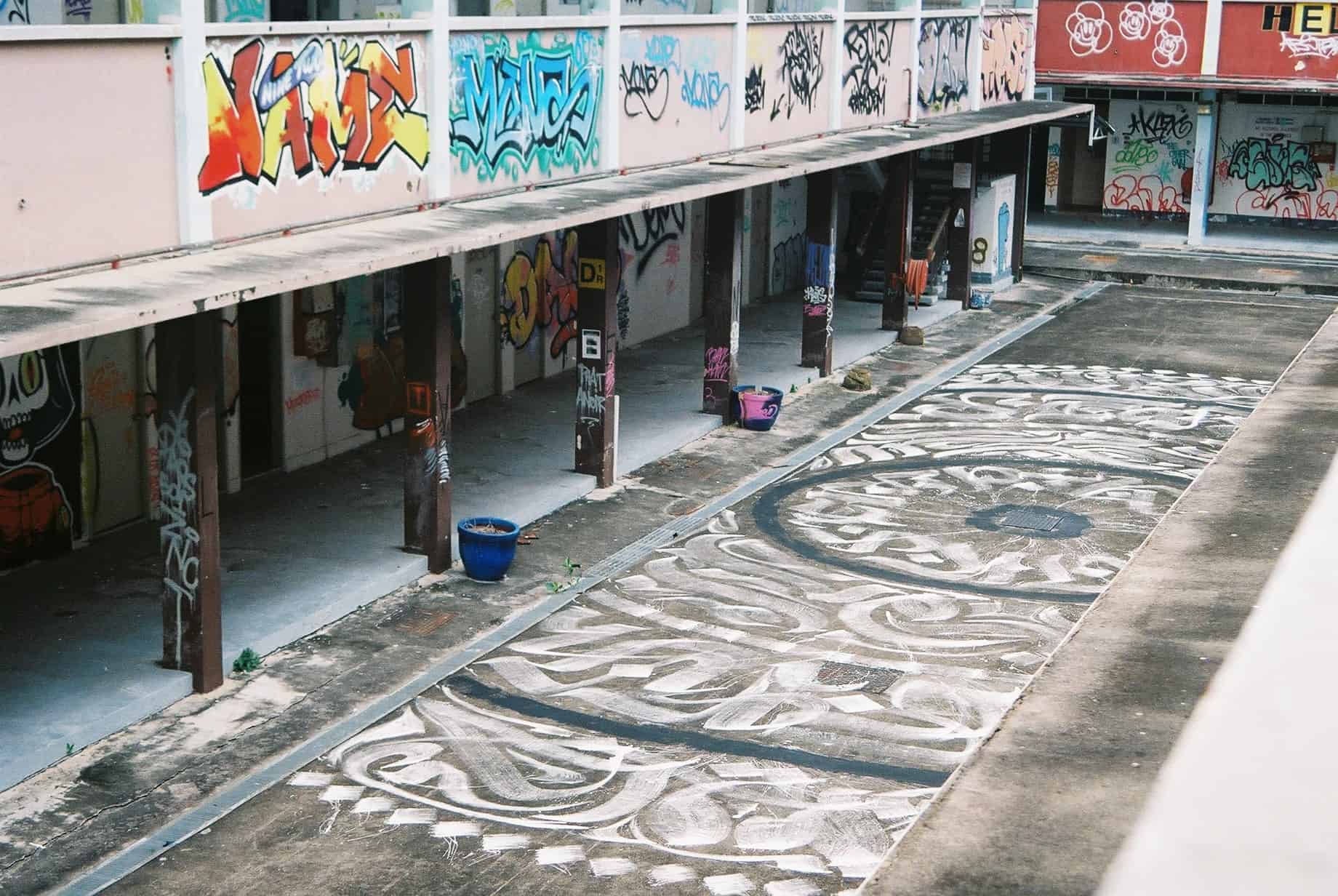
Graffiti art often comes with its negative connotations to many in the general public, particularly in our conservative society where it is uncommon. Often times, it is linked with mischief and rebellion.
It’s no surprise that many might think that these artworks were simply done by mischievous trespassers.
On a couple of occasions, the police were called in to investigate when members of the public spotted artists painting within the compound.
Building A Community
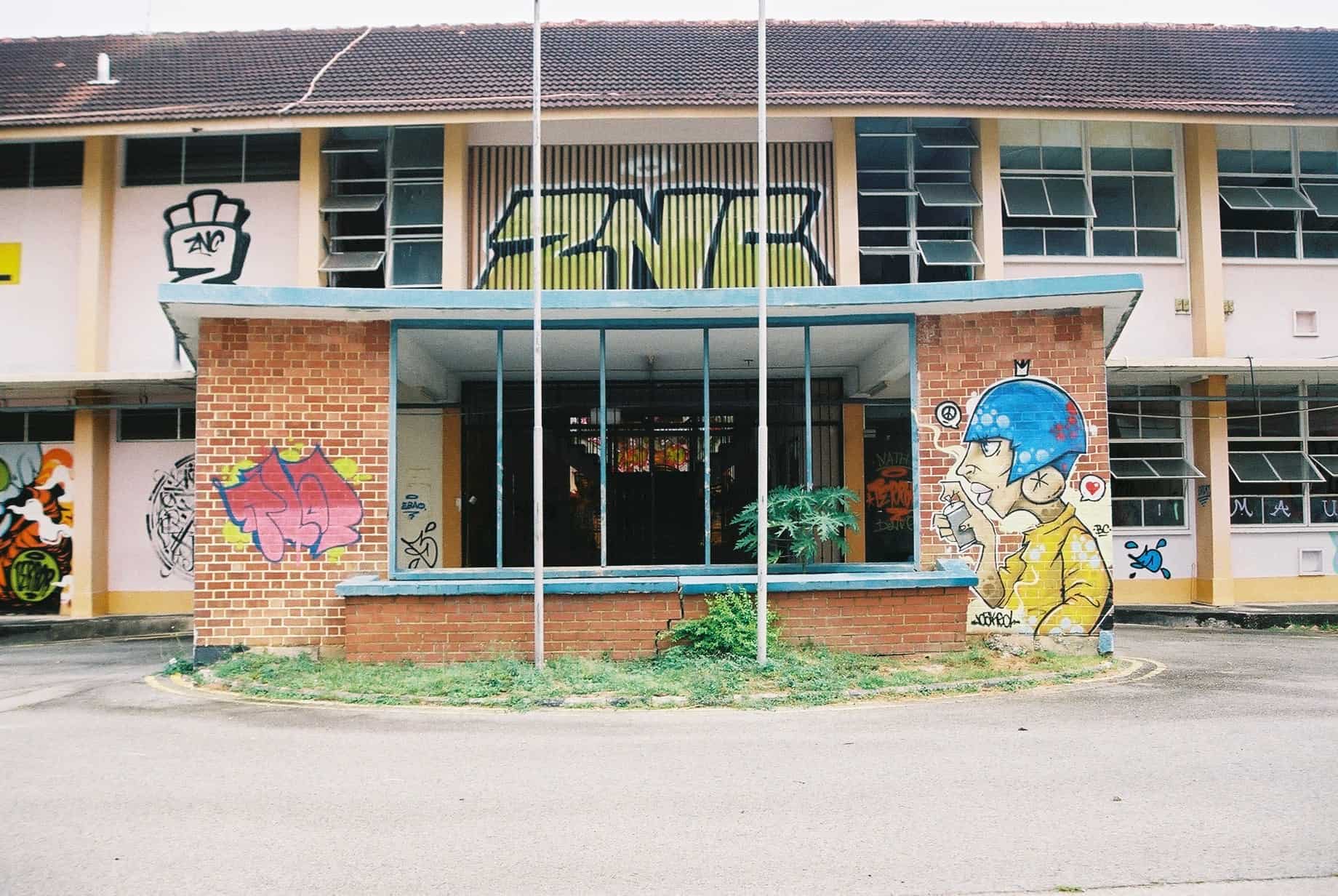
In actual fact, this building represents an initiative by the National Arts Council (NAC), in collaboration with Singapore Land Authority (SLA) to use the space as a practice ground for the local street art community.
Only recognised artists are allowed entry.
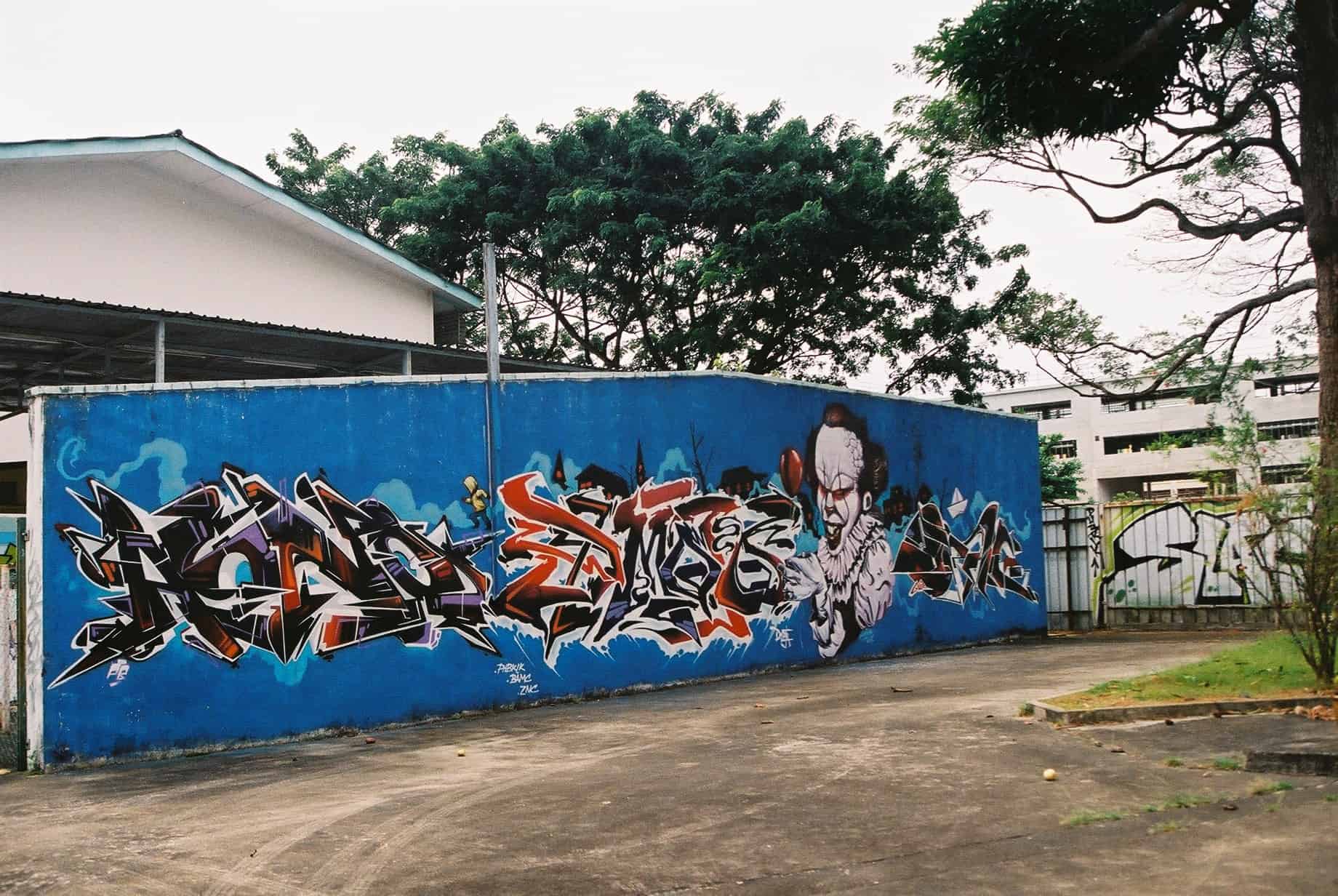
Before, street artists were only allowed to practice in public at the Somerset Skate Park or at the old Scape building.
“Obviously the skatepark was not enough for a growing culture (with more artists coming up now), so the idea of using spaces like buildings awaiting redevelopment came about,” said Trase, a member of RSCLS and long-time graffiti enthusiast.
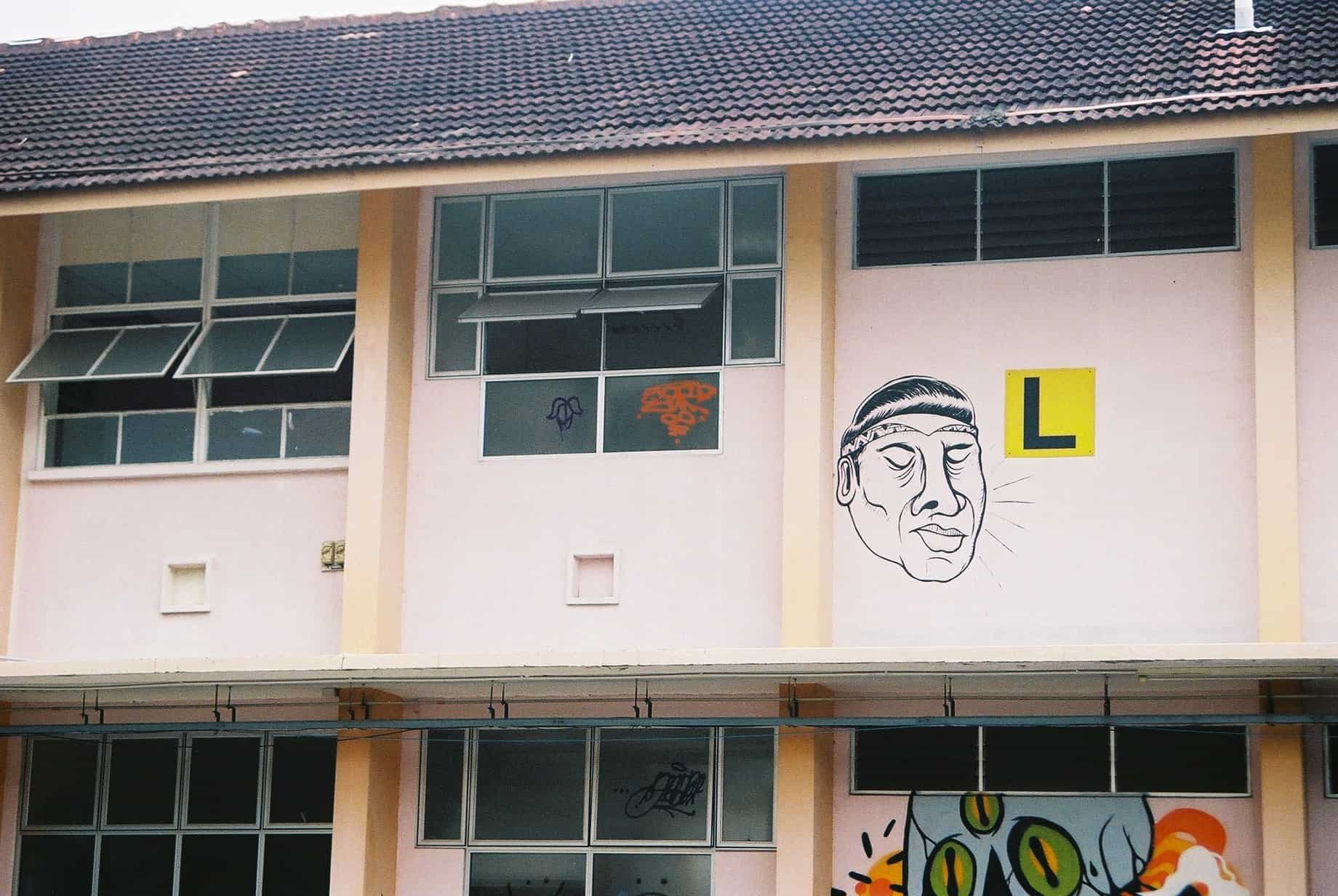
“RSCLS and NAC have been working together for years to nurture and grow the street art community in Singapore. A few years ago we met up with a representative from NAC who was interested to know more about local street art.”
“We talked about our concerns and problems, and came to the topic of practice space.”
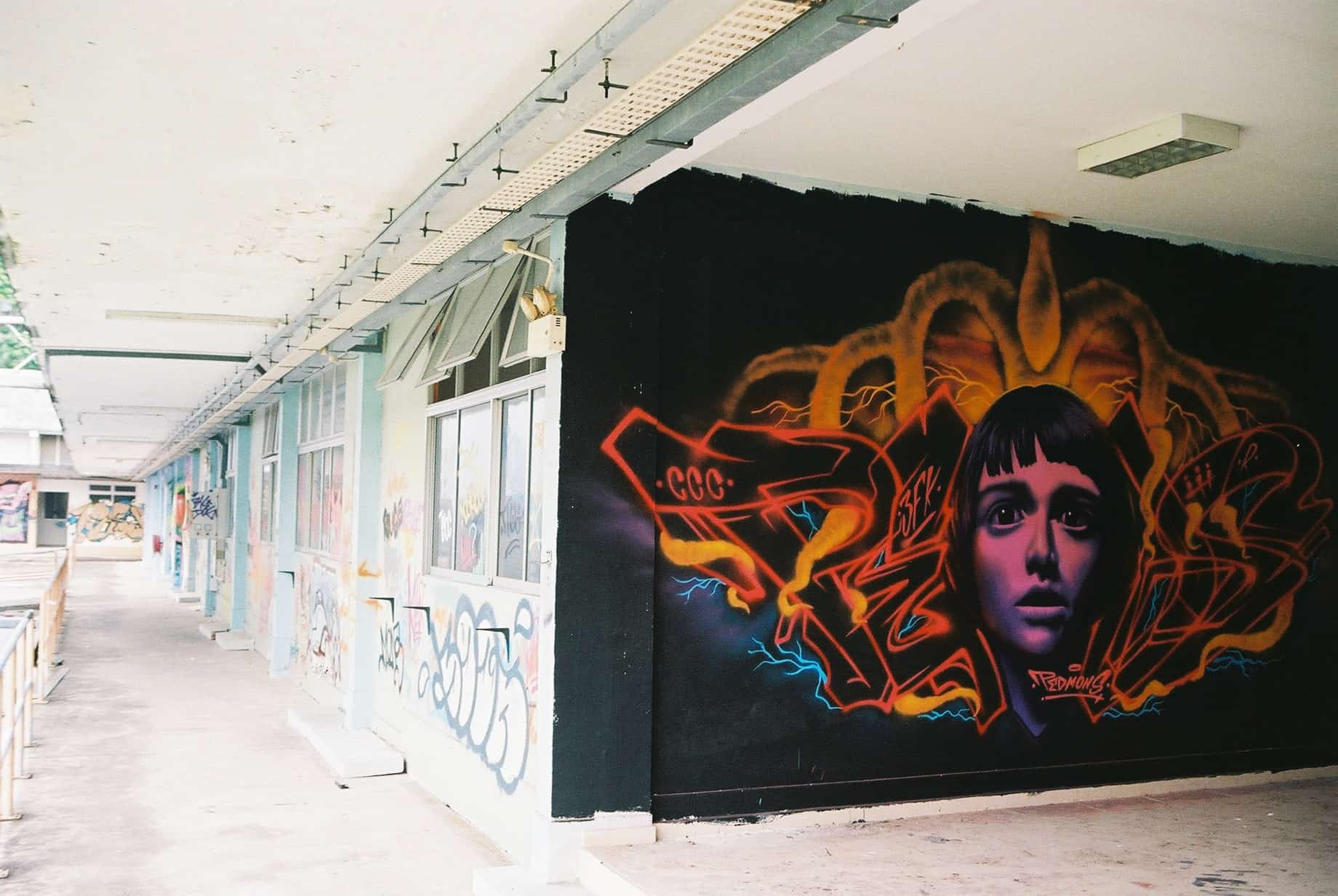
Their first pilot project was the Rail Corridor Art Space at Buona Vista Viaduct, with the help ofUrban Redevelopment Authority (URA).
“It was a good space, long and tall walls and nice viewer traffic of joggers and cyclists who pass through the area daily. Then it had to close due to redevelopment – after that, 369 came up.”
Trase credits URA for finding this spot, and says that they were “more than happy to “adopt” the space for whatever time it permitted us to use.
Start Of A Journey
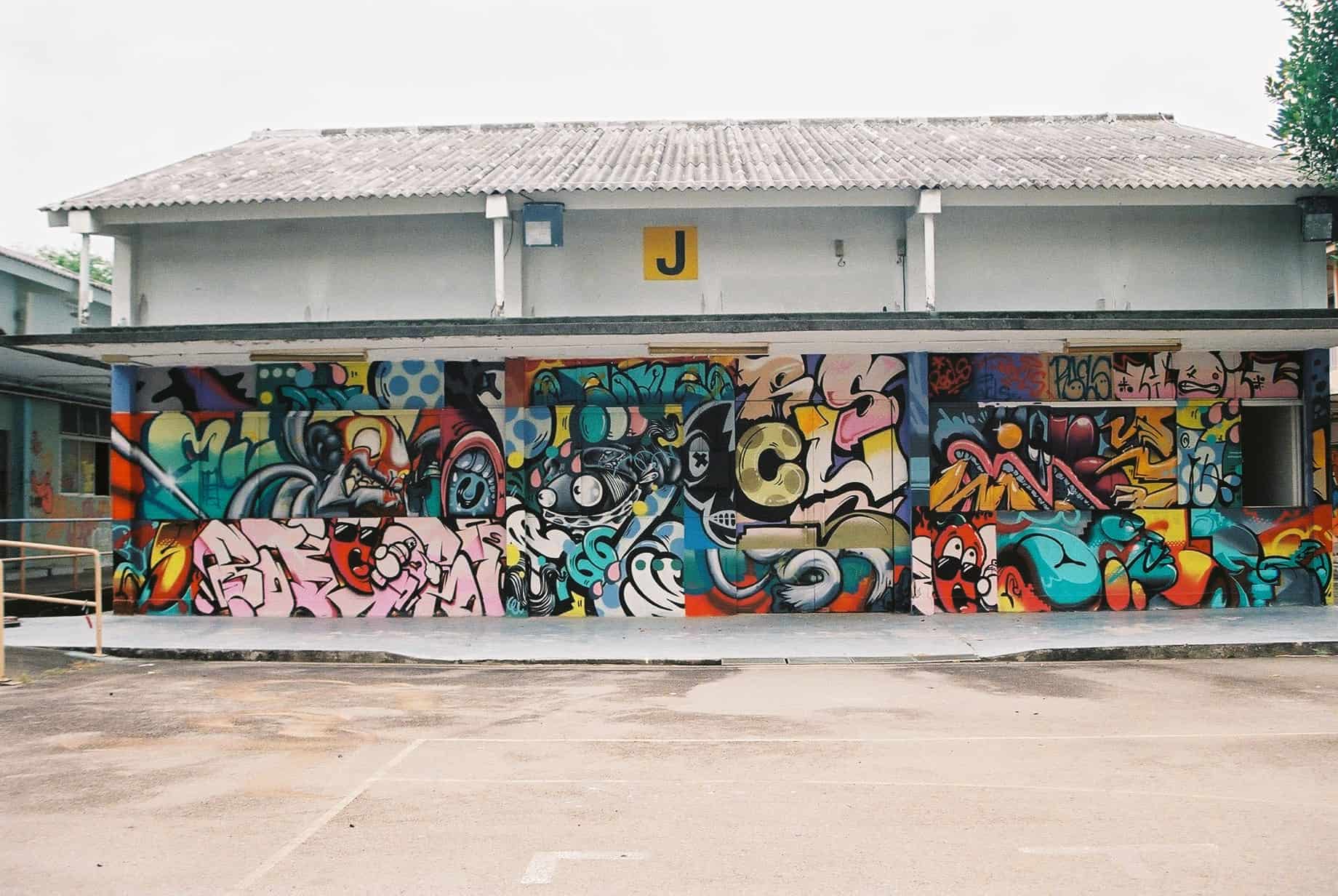
This initiative is a significant step forward for the acceptance of street art on a national level, but the process is difficult – a firm reminder of Singapore’s bureaucratic nature.
To gain access to the site, one has to undertake and sign a Letter of Understanding to various conditions.
“You will have to notify SLA of your intention to enter the premise, on what day, and what time. There is also a security company in place that takes care of the premise who requires you to notify them when you are coming. If you fail to do so, you may be considered as trespassing and can be charged if caught.”
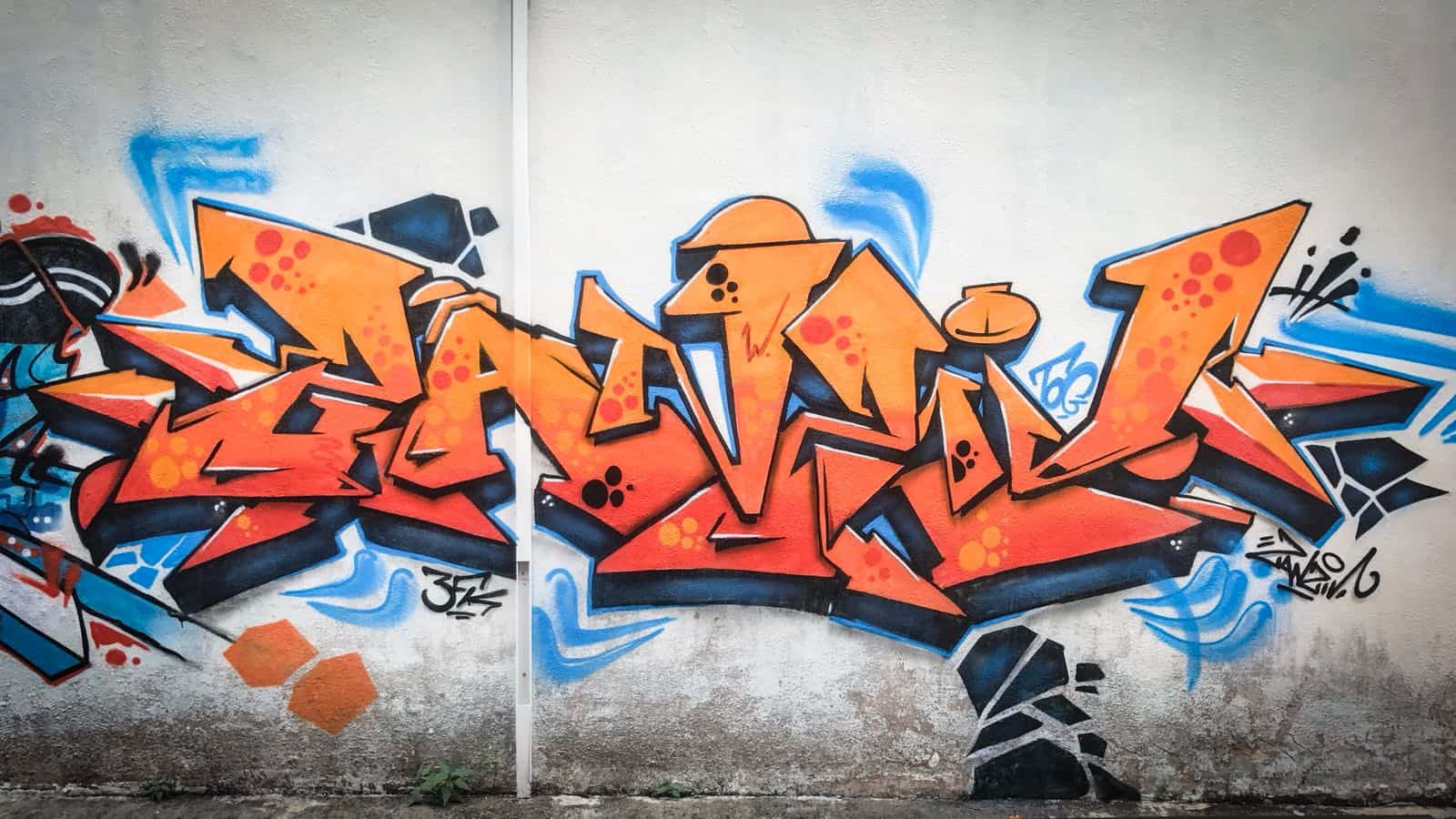
Despite this, however, a journey throughout the building’s compound proved that many from the local street art community embraced this initiative with open arms.
Most of its interior is covered with beautiful works of art. By interior, it doesn’t just mean the walls within the complex, but also its windows, doors, and any flat surface which paint could be applied on.
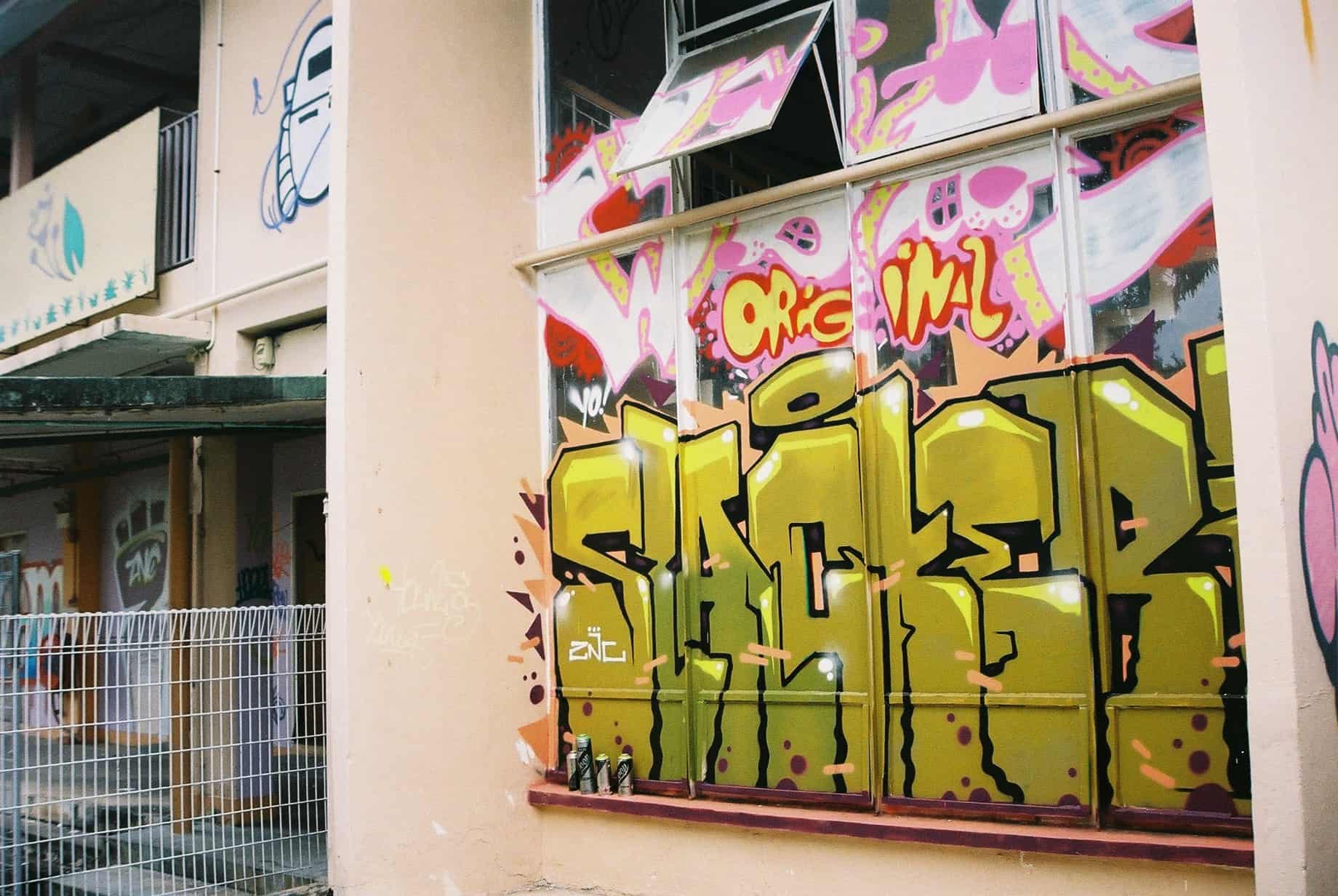
With Singapore being ever so quick in its redevelopment progress, 369 Tanjong Katong Road has sadly seen the end of its life as a temporary museum-cum-practice-ground for street artists in late February 2018.
Remaining Hopeful
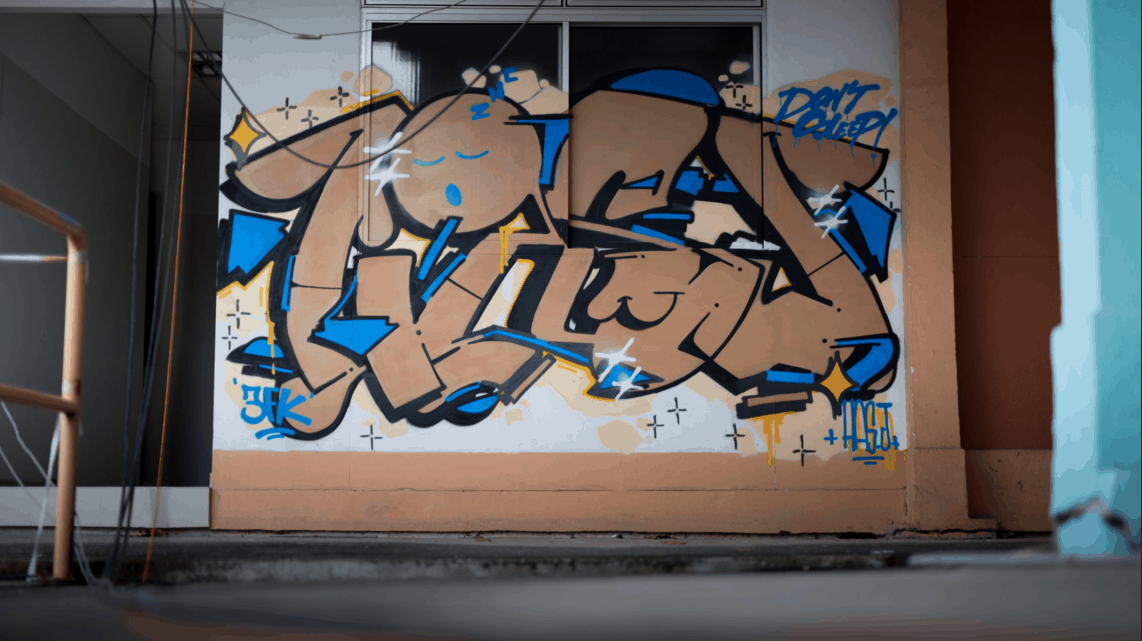
The Urban Redevelopment Authority (URA) will be demolishing parts of the building in order to make way for a roadworks project later on this year.
Though the local street art community will no doubt be dejected to see their hallowed practice ground being reduced to rubble, Trase is optimistic:
“I hope the younger generation will also take initiatives in trying to organize/create events, exhibitions, etc that will help cultivate the scene for the future generation.”
“The pioneers have worked hard to make street art a recognized art form, so we hope the younger ones will appreciate the effort and bring this culture further,” Trase mentions.
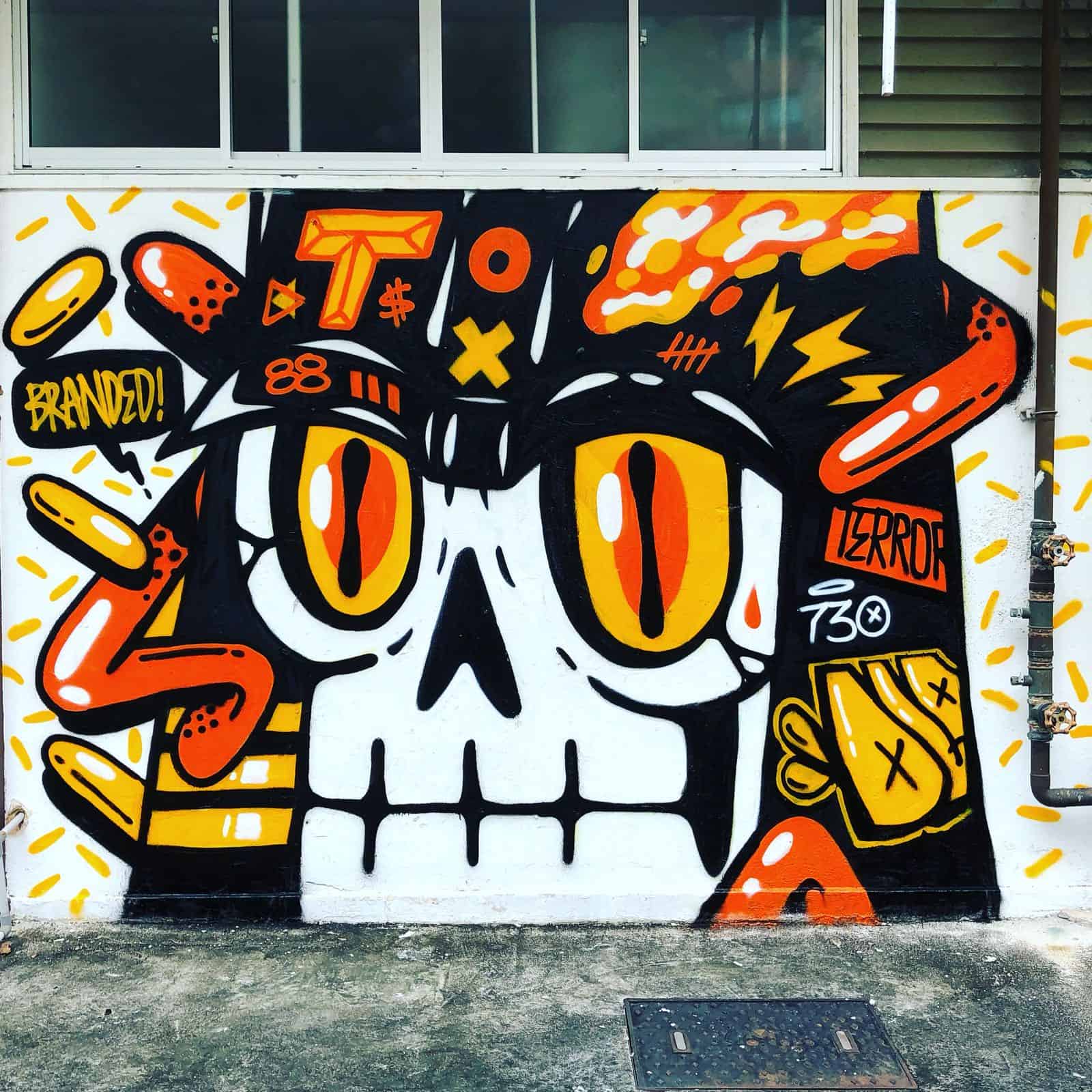
On that note, it is heartening to see such initiatives being undertaken by Singaporeans who are passionate about their art form, with the intention of sharing that passion with other similar, like-minded Singaporeans.
Also equally encouraging is the willingness of local authorities to collaborate with independent artists for the nurturing of local talent as a whole. Be it for art, dance, music or whatever, sharing builds community.
As we say goodbye to this building, one can certainly hope for more of such initiatives in the future from other passionate Singaporeans – regardless of their art form.
Check out the gallery for more beautiful works of art found within the complex.







